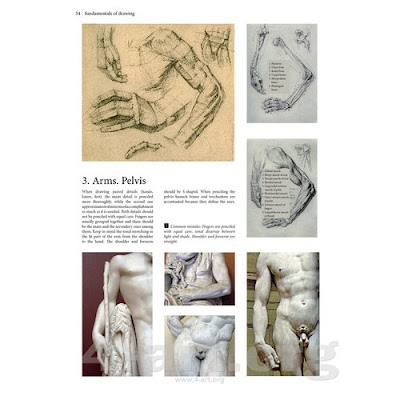Even though landscape painting was relegated to the middle of the hierarchy of
genres in painting, it isn't that easy. Really effective, believable landscape paintings can be difficult to achieve. Certainly landscape is a difficult discipline for me.
Depicting the real world obviously means that concepts for painting almost anything tangible, whether it's a human face or an oak tree are critical. Ideally, the painter should have good artistic vision (seeing angles, shapes, values, etc), good skills with the chosen medium, plus a keen appreciation for the kind of the object being represented, and not least a willingness to correct the picture at any stage.
One fault in the drawings of new artists is the tendency to produce a picture of what they think the object looks like, rather than it's real appearance So too often new artists produce poor drawings. Tree branches are awkward, or the foliage looks stuck-on, or maybe the trunk doesn't look rounded. Whatever the fault, the failure to draw the actual rather than the mental image is a common vexation for all artists. The beginning artist most certainly needs to draw or paint objects from life, with utter concentration. Painting and drawing rigorously from life--nature--adds experience and helps to form a library of accurate visual memories. A non-artist can be satisfied with a general mental impression of trees; an artist can't. For the realist, it is critical to know what the actual tree species may be--elm, oak, ash, palm, pine, spruce, and so on--since the shapes, foliage, bark, branches and habitat differ significantly. The kind of tree matters; a live oak doesn't belong in a northern landscape any more than a palmetto does in a scene of the New England shore.
 |
| Ten Types of Trees, from "Painting Trees & Landscapes" by Ted Kautzky |
A now-forgotten artist named Ted Kautzky published a book "
Painting Trees & Landscapes in Watercolor," in the mid-twentieth century that even now remains a gem. In his book, available now as a Dover reprint in soft and hardcover and for Kindle, Kautzky argues for detailed study of trees and other landscape features. Although the book is mostly monochromatic, the information provided is more about shapes and values and less about color. I'm not certain if the Dover reprint contains all material from the original. My own copy is a 1960 print edition, which can probably still be found in used book stores.
Kautzky did a wonderful job of showing the various shapes and foliage of what he called the ten types of trees. Each type (above) has a different look, different bark and trunk, different foliage colors and configurations, and so on.
He recommends practicing hard on all kinds of trees in your neighborhood and elsewhere, working to master each feature of each particular species. Of course, it may be difficult to find live oaks in Maine or Monterrey cypruses in Iowa. Still, sketching is the lifelong practice that builds the visual library. Here are a few more of his drawings of trees, from the book.
 |
| Oaks |
 |
| Evergreens | | |
 |
| Maples |
---
Ted Kautzky was mentioned previously in
Favorite Art Books Part 1.




















